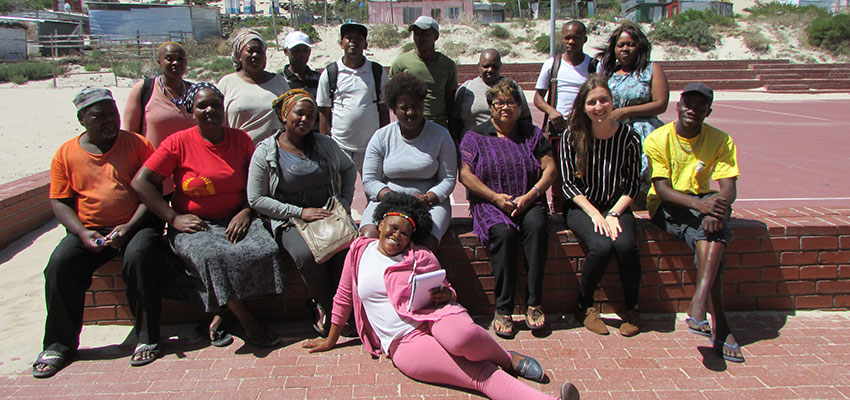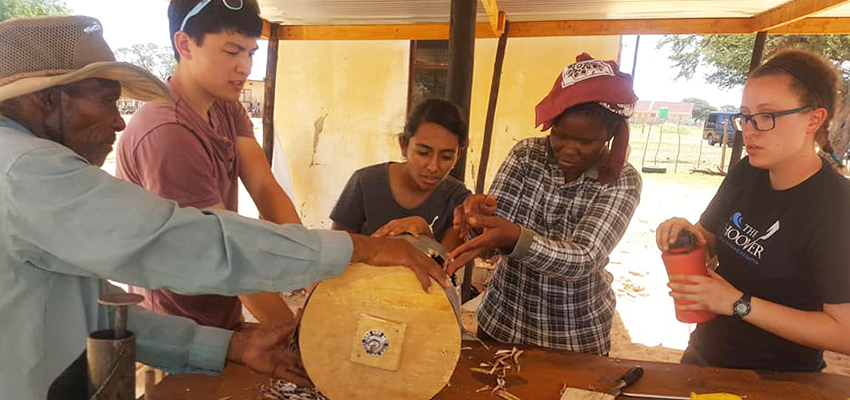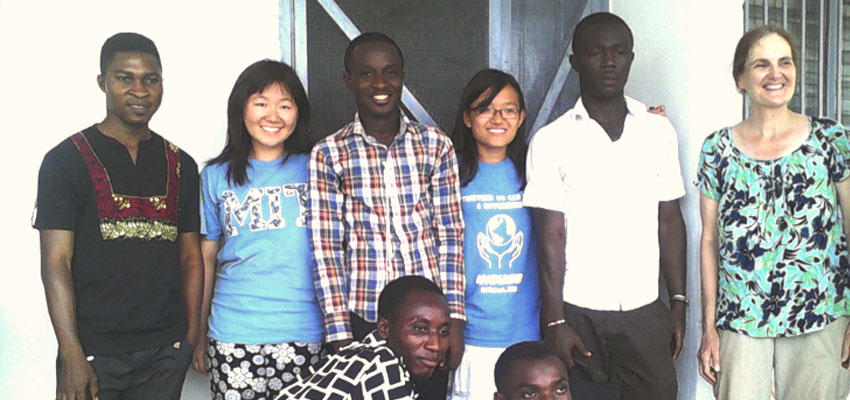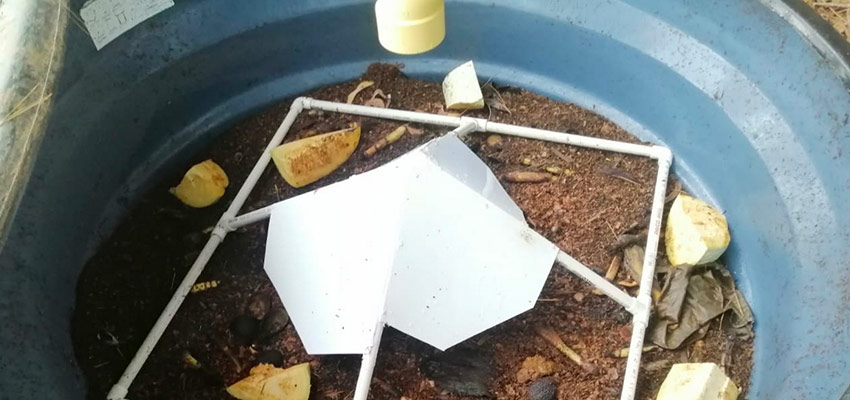
Designing a system to continuously monitor and test the efficacy of a vermifilter toilet in filtering out harmful contaminants from fecal matter.
MIT D-Lab class
D-Lab: Water, Sanitation, and Hygiene (WASH)
Community partners
- Diversa
- Natalia Barrera Gutierrez
- Diana Gamba
- Ecoconcientizate
- Eliana Robayo
Location
Our project works in the municipality of Silvania in Colombia.
Student team
- Neil Patel, MIT Department of Economics ‘23: I am a master’s student in Data, Economics, and Development Policy, from Plano, Texas.
- Layla Seaver, Harvard Department of Engineering Sciences '24: I am a junior studying Environmental Engineering, from Hong Kong.
- Emma Wang, MIT Department of EECS and Department of Mathematics '23: I am a senior studying computer science and math, from Pasadena, California.
- Christine Tang, MIT Civil and Environmental Engineering '25: I am a sophomore studying civil engineering with a concentration in structures, originally from Maryland.
- Trinity Stallins, MIT Environmental Engineering and Urban Planning ‘23
Project description
Ecoconcientizate is currently piloting a cutting-edge biological sewage treatment system specifically designed for use in rural Colombia. The vermifiltration system utilizes California red worms to compost fecal matter, and then drains liquids into a secondary layer of sand and gravel filters before transporting it to an artificial wetland for further treatment through a phytoremediation process.
Over the course of this semester, our team will collaborate with Ecoconcientizate to improve and standardize their solution to make it more scalable, low-cost, and easy to maintain. Our primary challenge will be to design a method for collecting data on the conditions inside the Vermifilter in order to determine whether the system is functioning optimally and to diagnose any potential issues that may arise.
As part of our partnership, we will support the community partner in generating data on Vermifilter conditions and demonstrate the efficacy of their technology. We will also develop an instruction manual outlining the construction, installation, and troubleshooting of our proposed sensor system, along with a proposed strategy for disseminating this information. This manual will serve as a comprehensive guide for users on how to interpret the data and how to act on it in order to maintain the Vermifilter system at peak performance.
Ideation and prototyping
To ensure optimal performance of each layer and determine the retention time, we created a laboratory model of the complete vermifiltration system. Our design featured a series of removable plastic trays, stacked on top of each other using a metal ladder with drilled holes at the bottom. The trays were then covered by a sheet of polyshade. We simulated the distribution of fecal waste using a pyramid-shaped distribution system at the top of the structure, building upon the design of last semester's D-Lab team. Our sample waste consisted of cow manure, which we sourced from a farm in Massachusetts. The final layer will include an outflow pipe connected to a disposal tank, from which we will collect our samples of water for testing.
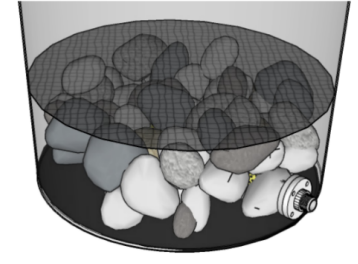
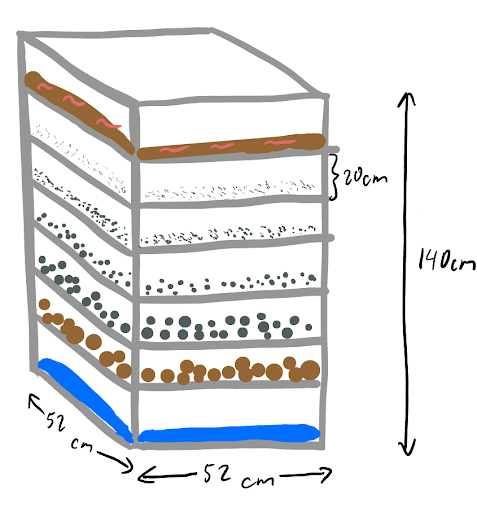
Testing and monitoring
We will conduct rigorous testing on key parameters, including retention time and water quality, to optimize the performance of the vermifiltration system. In addition, we will experiment with different volumetric flow rates to determine the optimal rate that maximizes the removal of organic pollutants by the system's layers.
As we analyze our samples, our first step will be to measure the biological oxygen demand, which represents the amount of dissolved oxygen consumed by microbial life through the oxidation of organic matter. We will use an oxygen probe to collect this data. Additionally, we will test for the presence of other indicators of harmful microorganisms in the water, such as total coliforms.
Our comprehensive testing will also include measurements of total suspended solids, pH levels, total nitrogen, total phosphorus, and turbidity. These parameters serve as crucial indicators of the overall effectiveness of the filtration system in removing impurities and ensuring the water is safe and clean for use.
Next steps
After gathering and collecting our data, our team will travel to Silvania, Colombia later this summer to implement our quality testing methods on a real Vermifilter system.
Previous year student project
Improving Waste Distribution Vermifilter Toilet Tanks
Contact
Libby Hsu, MIT D-Lab Associate Director for Academics; Instructor, D-Lab: WASH



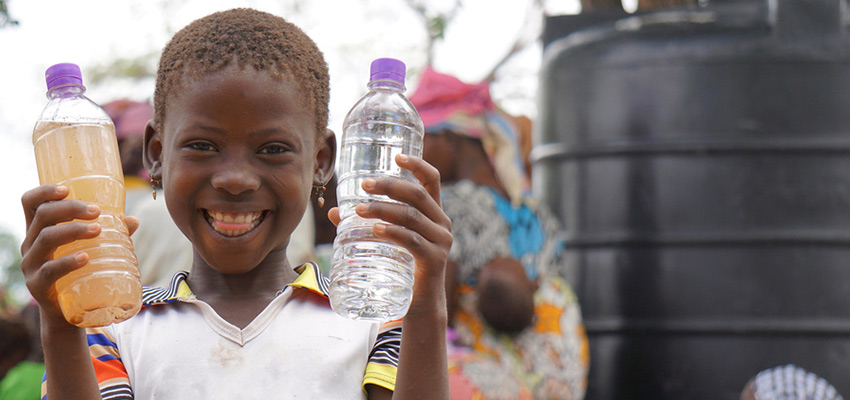
![More than 30 from MIT [including a D-Lab: WASH alumna and D-Lab Scale-Ups Fellow] named to Forbes 30 Under 30 lists](/sites/default/files/2018-12/Forbes%2030%20under%2030_0.jpg)
